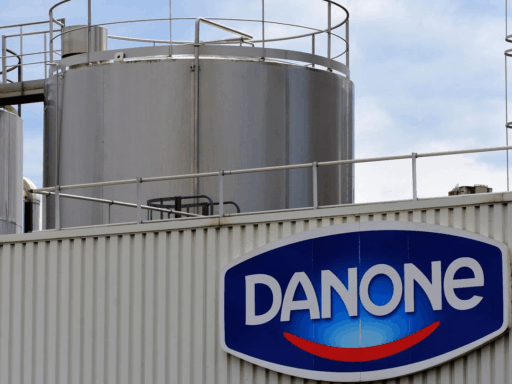- Sustainability Strategy and Goals
- Key Sustainability Innovations and Technologies
- Measurable Impacts
- Challenges and Areas for Improvement
- Future Plans and Long-Term Goals
- 1. Achieve 100% Renewable Electricity by 2030
- 2. Reduce Scope 3 Emissions by 25% by 2030
- 3. Circular Packaging and Product Reform
- 4. Water Stewardship by 2026
- 5. Product Sustainability and Electrification
- 6. Circularity Partnerships and Scaling
- 7. Supplier Engagement and Transparency
- Summary of Key 2030 Targets
- Comparisons to Industry Competitors
The Home Depot, the world’s largest home improvement retailer, has made significant strides in sustainability, focusing on reducing its environmental impact, promoting circular economy principles, and enhancing energy efficiency. The company’s 2023 ESG Report highlights its commitment to these goals, detailing progress and setting new targets for the future.
Sustainability Strategy and Goals
The Home Depot’s sustainability strategy is built around three core pillars: Focus on Our People, Operate Sustainably, and Strengthen Our Communities. This approach aligns with global frameworks such as the United Nations Sustainable Development Goals (UN SDGs) and the Science Based Targets initiative (SBTi).
Net Zero and Carbon Emissions
- The Home Depot aims to reduce its Scope 1 and 2 carbon emissions by 42% by 2030 from a 2020 baseline.
- In 2022, the company reduced these emissions by approximately 92,000 metric tons, equivalent to removing over 20,000 cars from the road for a year.
Water Stewardship
- By 2026, The Home Depot plans to help customers reduce water use by 100 billion gallons through the sale of WaterSense® products and other water-saving initiatives.
Regenerative Agriculture
While not directly involved in agriculture, The Home Depot supports sustainable forestry practices by sourcing wood products from responsibly managed forests, promoting biodiversity and ecosystem health.
Deforestation and Biodiversity
The company has implemented a Wood Purchasing Policy that prioritizes wood from certified, responsibly managed forests, helping to combat deforestation and protect biodiversity.
Packaging and Circular Economy
- The Home Depot is committed to eliminating expanded polystyrene (EPS) foam and polyvinyl chloride (PVC) film from private-brand packaging by 2023.
- By 2027, all new private-brand fiber packaging will be compostable, recyclable, or made from recycled content.
Human Rights and Responsible Sourcing
The company requires suppliers to adhere to its Responsible Sourcing Standards, which prohibit forced labor and promote fair labor practices throughout the supply chain.
Nutrition and Health
While not directly applicable, The Home Depot promotes health and safety through its product offerings, including non-toxic and low-emission materials for home improvement projects.
Community and Social Impact
- The Home Depot Foundation has invested over $450 million in veteran causes since 2011 and plans to invest an additional $50 million by 2028 to train skilled tradespeople, including veterans.
Governance and Transparency
The company publishes annual ESG reports detailing its progress and goals, ensuring transparency and accountability in its sustainability efforts.
Technology and Innovation
The Home Depot leverages technology to improve energy efficiency, such as installing energy management systems in stores and utilizing data analytics to optimize operations.
Global Partnerships and Advocacy
The company collaborates with organizations like the Science Based Targets initiative (SBTi) to align its emissions reduction goals with climate science and global efforts to combat climate change.
Key Sustainability Innovations and Technologies
Renewable Energy Projects
The Home Depot has committed to producing or procuring 100% renewable electricity for its facilities by 2030. This includes investments in solar and wind energy projects across the United States.
Circular Economy Initiatives
The company has implemented programs to recycle materials like plastic pots, shrink wrap, and EPS foam into new products, such as decking and insulation. In partnership with Trex, The Home Depot converts over 8,000 tons of plastic waste into wood-alternative decking annually.
Sustainable Packaging
By redesigning packaging for over 350 private-label products in 2023, The Home Depot reduced material use and size, saving significant amounts of PVC and other materials.
Measurable Impacts
- Carbon Emissions Reduction: In 2022, The Home Depot reduced Scope 1 and 2 carbon emissions by approximately 92,000 metric tons.
- Energy Efficiency: Customer purchases of ENERGY STAR® products in 2023 reduced annual electricity use by 3.6 billion kilowatt-hours, saving customers $455 million and lowering carbon emissions by 2.5 million metric tons.
- Water Conservation: Customer adoption of WaterSense® products resulted in a reduction of nearly 29 billion gallons of water consumption.
Challenges and Areas for Improvement
Scope 3 Emissions
Managing emissions from the use of sold products remains a challenge. The Home Depot has committed to reducing these emissions by 25% by 2030.
Supply Chain Complexity
Ensuring all suppliers adhere to sustainability standards is complex. The company aims to motivate top-tier strategic suppliers to have publicly stated sustainability goals by 2025.
Waste Reduction
While progress has been made, further efforts are needed to minimize waste generation and enhance recycling programs across all operations.
Future Plans and Long-Term Goals
The Home Depot’s sustainability roadmap through 2030 and beyond reflects a commitment to both decarbonization and product innovation, with clear goals and publicly disclosed accountability.
1. Achieve 100% Renewable Electricity by 2030
- The Home Depot has committed to sourcing 100% renewable electricity for all U.S. facilities by 2030.
- This includes:
- Expanding on-site solar projects at distribution centers and stores.
- Power purchase agreements (PPAs) with solar and wind farms, contributing to significant Scope 2 reductions.
- By 2023, The Home Depot had already installed solar power systems at 80+ stores.
2. Reduce Scope 3 Emissions by 25% by 2030
- The Home Depot acknowledges that most emissions come from product use (e.g., gas-powered tools and appliances).
- Key strategies include:
- Increasing rechargeable battery-powered tools to account for 85% of U.S. and Canadian outdoor power equipment sales by 2028.
- Partnering with suppliers to enhance product energy efficiency, particularly in the ENERGY STAR® and WaterSense® categories.
- Consumer education programs and rebates will also be scaled to incentivize low-carbon product adoption.
3. Circular Packaging and Product Reform
- By 2027, all new private-brand fiber packaging will be recyclable, compostable, or made from recycled materials.
- The company is eliminating:
- Expanded Polystyrene (EPS) foam
- PVC shrink film
- The redesign of over 350+ private-label product packages in 2023 already reduced:
- Material use
- Carbon footprint from packaging transportation
- Packaging waste at end-of-life
4. Water Stewardship by 2026
- Home Depot aims to help customers save 100 billion gallons of water by 2026.
- It will accomplish this through:
- The sale of WaterSense®-certified products
- Enhanced educational campaigns on household water efficiency
- By 2024, customer adoption already saved nearly 29 billion gallons, putting the company ahead of schedule.
5. Product Sustainability and Electrification
- By 2028, the company aims to transition the majority of outdoor tools (mowers, trimmers, blowers) to battery-powered alternatives.
- This supports the long-term electrification of product lines and reduction of combustion-based tools.
6. Circularity Partnerships and Scaling
- The Home Depot plans to expand its partnership with Trex and similar companies to convert retail plastic waste into:
- Wood-alternative decking
- Insulation and home improvement materials
- It also aims to build more closed-loop systems internally, recovering shrink wrap, plastic pots, and returned merchandise packaging.
7. Supplier Engagement and Transparency
- By 2025, The Home Depot wants all top-tier strategic suppliers to:
- Publish public sustainability goals
- Participate in emissions reporting and reduction initiatives
- Supplier onboarding processes now require alignment with Home Depot’s Responsible Sourcing Standards.
Summary of Key 2030 Targets
| Goal | Target Year | Status |
|---|---|---|
| 100% renewable electricity for operations | 2030 | In progress |
| Scope 1 & 2 emissions: 42% reduction | 2030 | On track |
| Scope 3 emissions: 25% reduction | 2030 | Early implementation |
| Water savings: 100B gallons via WaterSense® | 2026 | Ahead of schedule |
| Circular packaging: All fiber-based private label | 2027 | In transition |
| Electrify 85% of outdoor equipment | 2028 | Active |
Comparisons to Industry Competitors
The Home Depot vs Lowe’s
- Emissions Targets: Lowe’s aims to reduce Scope 1 and 2 emissions by 40% by 2030 (from a 2016 baseline), while The Home Depot has a slightly more aggressive 42% reduction by 2030 (from a 2020 baseline).
- Renewable Energy: Both retailers are transitioning to renewable electricity, but Home Depot has made larger-scale solar and wind investments, targeting 100% renewable electricity for operations by 2030.
- Circular Economy: The Home Depot has extensive partnerships, such as with Trex, recycling 8,000+ tons of plastic annually. Lowe’s also recycles wood pallets and shrink wrap but lacks the same visibility around upcycling.
- Water Reduction: The Home Depot aims to help customers save 100 billion gallons of water by 2026, a clear public goal not equally emphasized by Lowe’s.
Verdict: Home Depot’s packaging reforms, carbon tracking, and broader circular economy leadership position it ahead of Lowe’s in overall sustainability maturity.
The Home Depot vs IKEA
- Net Zero Goals: IKEA targets net-zero across its entire value chain by 2040, compared to Home Depot’s current focus on operational emissions (Scope 1 & 2) and 25% Scope 3 reduction by 2030.
- Renewables: IKEA produces more energy than it consumes globally through solar and wind — a notable leadership point.
- Circular Economy: IKEA has pioneered resale, repair, and rental models as part of its People & Planet Positive strategy. The Home Depot emphasizes material recovery and packaging design but has not yet implemented circular consumer services like IKEA.
Verdict: IKEA leads on value-chain net-zero ambition and circular services, while The Home Depot shows stronger progress in retail-specific energy and product packaging reforms.
The Home Depot vs Menards
- Transparency: Menards has limited publicly available sustainability data or annual ESG reporting. The Home Depot publishes detailed, third-party reviewed ESG reports.
- Energy Use & Emissions: Unlike The Home Depot’s clear emission reduction targets and renewable procurement goals, Menards does not publicly disclose emissions reduction timelines.
- Sustainable Products: Menards promotes some eco-labeled products but does not operate programs comparable to Home Depot’s WaterSense, ENERGY STAR, or Eco Actions initiatives.
Verdict: The Home Depot leads significantly in transparency, governance, and measurable environmental impact compared to Menards.
Summary Table
| Company | Net-Zero Target | Renewable Energy Commitment | Circular Economy Initiatives | Scope 3 Engagement |
|---|---|---|---|---|
| Home Depot | 42% reduction by 2030 (Scopes 1 & 2), 25% Scope 3 | 100% renewable electricity by 2030 | Packaging reform, recycling with Trex | Customer-use, supplier goals by 2025 |
| Lowe’s | 40% reduction by 2030 (Scopes 1 & 2) | Renewable transition underway | Pallet/shrink wrap recycling | Partial disclosure |
| IKEA | Net-zero by 2040 (entire value chain) | Energy-positive via solar/wind | Furniture resale, repair, rental | Full value chain goals |
| Menards | No public net-zero target | Not disclosed | Minimal public data | Not disclosed |
Sources:
https://corporate.homedepot.com/news/company/2023-esg-press-release https://corporate.homedepot.com/page/resources-reports
https://ecoactions.homedepot.com/our-commitment https://ecoactions.homedepot.com/blog/product-goals-packaging https://ecoactions.homedepot.com/blog/2024-end-of-the-year-recap https://corporate.homedepot.com/news/sustainability/home-depot-reduced-carbon-emissions-more-127000-metric-tons-2020-commits-100 https://corporate.homedepot.com/news/sustainability/supplier-spotlight-circular-economy-turns-8000-tons-plastic-trex-decks
https://esgtoday.com/home-depot-commits-to-reduce-emissions-from-sold-products-by-25-by-2030
https://corporate.lowes.com/corporate-responsibility
https://about.ikea.com/en/sustainability






